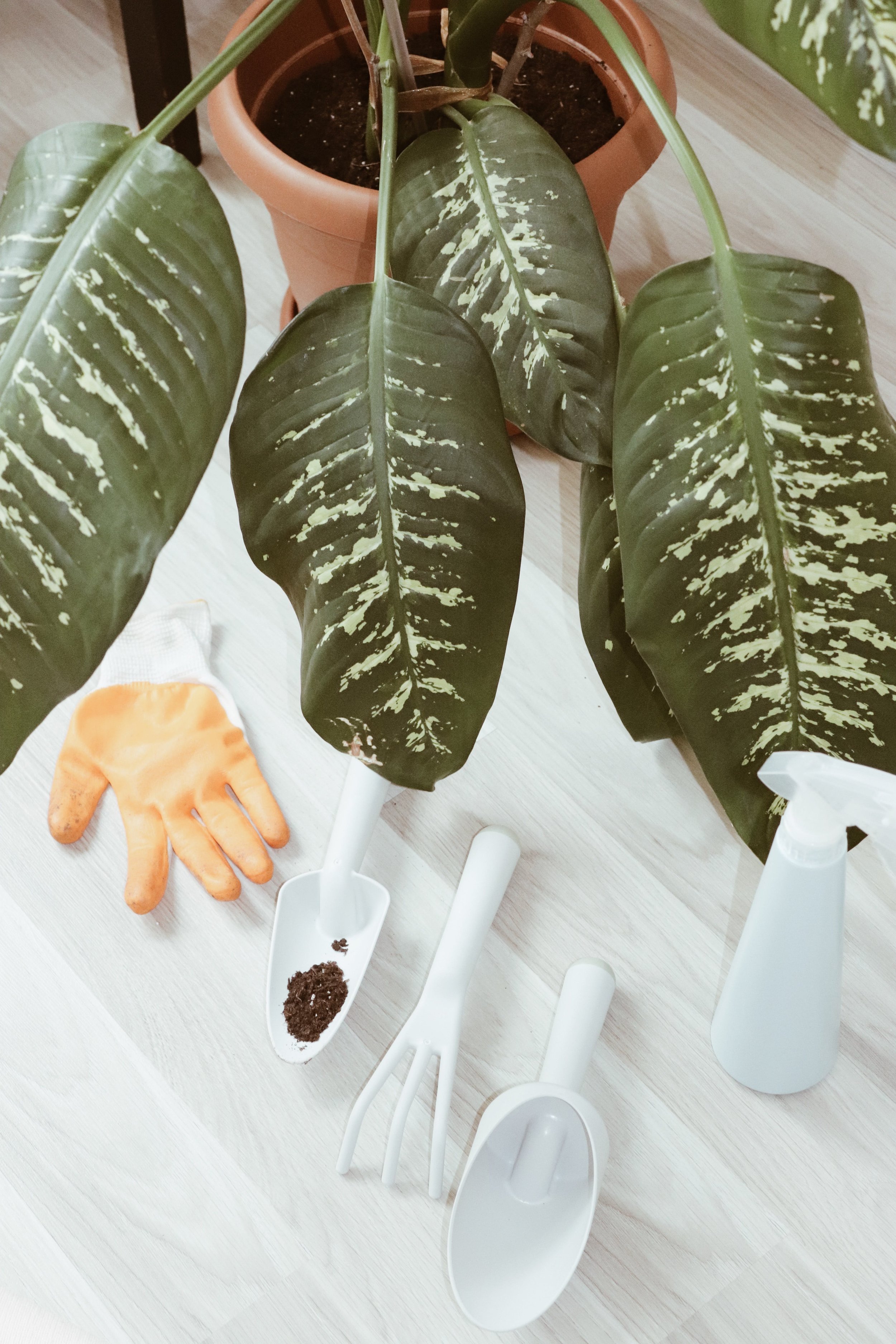Understanding Dieffenbachia: Basic Care and Maintenance
Dieffenbachia, a member of the Araceae family, is native to the warm, humid tropical rainforests of Central and South America. Its common name, 'Dumb Cane,' originates from the plant's toxic sap, which can cause temporary speechlessness if ingested. This plant is Known for its lush, patterned foliage. Dieffenbachia varieties vary in size and color, often displaying striking combinations of green, white, and yellow.
Dieffenbachia has historically been chosen for its air-purifying qualities and adaptability to indoor environments. This adaptability makes it a favored houseplant, capable of growing in various light conditions, though it prefers indirect light to maintain its vibrant leaf coloration. The plant's popularity in indoor spaces can be attributed to its robust nature and relative ease of care and propagation, making it suitable for novice and experienced plant enthusiasts.
Dieffenbachia's prominence in horticulture is not just limited to its ornamental value; it also holds a place in plant physiology and pathology studies, given its responses to various environmental stresses and susceptibility to certain plant diseases.
Popular Cultivars
Here are seven popular cultivars of Dieffenbachia, each with its unique characteristics:
Dieffenbachia 'Camille': Known for its large, broad leaves with a creamy white center and green margins.
Dieffenbachia 'Tropic Snow': Features broad leaves with a blend of white and green, giving it a snowy appearance.
Dieffenbachia 'Compacta': As the name suggests, it's a compact variety with lush green leaves suitable for smaller spaces.
Dieffenbachia 'Amoena': Known for its tall growth and dark green leaves with white stripes.
Dieffenbachia 'Rudolph Roehrs': This cultivar stands out with its bright, variegated leaves with a mix of yellow and green.
Dieffenbachia 'Star White': Features striking white and green variegated leaves, often used as a decorative indoor plant.
Dieffenbachia 'Exotica': Notable for its vibrant green leaves speckled with white and yellow, giving it an exotic look.
Care Essentials
Soil: Dieffenbachia thrives in loose, fertile, and organic-rich soil.
Watering: Water the plant when the top inch of soil feels dry. Overwatering can lead to root rot.
Light: It prefers bright, indirect sunlight. Too much direct sunlight can scorch the leaves.
Temperature: The ideal range is between 65º and 75ºF (18-24ºC).
Fertilization: Use a balanced, water-soluble fertilizer every 4-6 weeks during the growing season.
Propagation Method
Selecting Cuttings: Choose healthy stem sections, 4-6 inches (10-15 cm) long.
Rooting Hormone (Optional): Dip the cut end in rooting hormone to encourage root growth.
Planting: Use a well-draining potting mix. Plant the cutting about 2 inches (5 cm) deep in the soil.
Moisture and Covering: Water lightly and cover the pot with a plastic bag to retain humidity.
Root Development: Roots typically develop in 3-4 weeks. Transplant once established.
Post-Propagation Care
Light: Provide indirect sunlight for optimal growth.
Watering: Maintain a consistent watering schedule without over-saturating the soil.
Fertilization: Use a complete fertilizer like 20-20-20 every 4-6 weeks during the growing season.
Safety Note
Toxicity Awareness: Dieffenbachia contains oxalic acid and asparagine, which are toxic when ingested. This toxicity can pose risks, especially to small children and pets.
Handling Precautions: When trimming or propagating the plant, handling it with care is crucial. The plant's sap can cause irritation or a burning sensation upon contact with skin or mucous membranes. It's advisable to use gloves during handling.
First Aid Measures: If skin contact occurs, wash the area thoroughly with soap and water. In case of ingestion, immediately seek medical attention or contact a poison control center. Providing the best possible care while minimizing exposure to the plant's toxic elements is essential.
Keeping Dieffenbachia Safe at Home: Ensure this plant is placed in an area out of reach of children and pets. Awareness and proper handling are key to enjoying the beauty of Dieffenbachia while keeping your household safe.
Conclusion
Dieffenbachia is not only aesthetically pleasing but also purifies indoor air. This hardy plant can be a long-lasting addition to your indoor garden with proper care. Remember to handle it carefully due to its toxic nature.
Additional Reading
Here's a list of informative blog posts that provide detailed insights on Dieffenbachia care and propagation:
"How to Care For and Grow Your Dieffenbachia" by La Résidence:
This post emphasizes the importance of properly pruning, cleaning, and repotting Dieffenbachias to maintain health and beauty.
"Dieffenbachia (Dumb Cane) Care and Propagation" by Sprouts and Stems:
Offers guidance on misting Dieffenbachias to provide extra humidity, fertilizing tips using a balanced liquid fertilizer, and potting mix advice.
"How to Grow and Care for Dieffenbachia (Dumb Cane)" by Jon VanZile, The Spruce:
Explore the essentials of growing and caring for Dieffenbachia, a popular and easy-to-maintain houseplant, in this comprehensive guide that covers everything from light requirements to propagation methods.
How to Grow and Care for Dieffenbachia (Dumb Cane), from The Spruce

